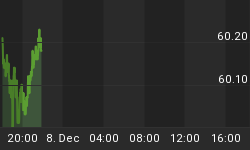US farmland values have been growing. Since 2009, the nationwide per-acre value has risen almost 40% while prime farmland properties have sold for record prices. This appreciation derives from legitimate supply-and-demand trends in agricultural commodities. These developments include: an increasing world population, continued limitations on arable land, fresh-water constraints, declining growth in crop yields, and increasing caloric consumption in developing countries. These trends are powerful, likely to continue, and carry a worldwide impact. But there is a far more important reason to invest in farmland today - one that is not reflected in current values.
Farmland is an inflation hedge. Allocating part of one's investment portfolio to farmland (particularly farmland in nations which will experience relatively high inflation) will not only protect investors, but will allow them to profit - perhaps immensely.
Why farmland and not some other real estate asset class? Why not own a Real Estate Investment Trust (REIT) which holds office buildings, hotels, retail shopping malls, or the like? All things being equal, it is true that all real estate should perform relatively well in an inflationary environment. Unfortunately, in the next two to ten years, investors will also likely to have to contend with severe economic downturns interrupted with weak "recoveries." Picture the US in the 1970's, but potentially far worse. In such situations, the office building cannot attract tenants, the hotel goes vacant, and the retail shopping mall loses its anchor stores. Farmland has no vacancy issues.
In an inflationary recession, farmland values should thrive. Unlike other real estate asset classes, farmland sells its products to an international marketplace. Corn, soybeans, and wheat will fetch a similar price in any market. Accordingly, as a nation's currency depreciates relative to other currencies, its exports become cheaper. A devastating inflation in the US will hurt American consumers at the grocery store, yet whet the appetite of foreigners.
As demonstrated in the following graphs, the impact of the 1970s US inflation provides some precedent. Grain exports rose significantly not only in absolute volume, but also relative to global exports.


Perversely, this provided a double-whammy for American consumers. As the law of demand dictates, more demand generates higher prices. So agricultural products rose not just in nominal terms, but also in real terms. In fact, the 1970s experienced some of highest prices ever for US agricultural commodities after accounting for inflation:

Rising crop prices increased farm revenue which directly translated into higher farmland values. For the ten-year period ending in 1981, US farmland values rose 303% while inflation increased 118%. Farmland appreciation was especially dramatic when viewed in the 30-year period from 1960 through 1989:

And how did traditional investment vehicles like stocks and bonds perform during this ten-year period? In real terms, stocks lost value (up 115% which is less than the aforementioned 118% increase in the consumer price index). Worse, bonds lost almost 70% of their real value (a 10-Year Treasury Bond total return index increased by only 38% in nominal terms). Investors experienced a decade of massive losses.
Despite this historical precedent, the investment community - to this day - ignores farmland. In fact, few wealth managers will even consider farmland as an investment for their clients. Why? First, the wealth management industry rarely adopts a macroeconomic viewpoint, and certainly not one which deviates from Federal Reserve or other government agency prognostications. Those firms which do hold a macroeconomic opinion embrace Keynesian economic theory which leads them to share the mainstream's skewed economic expectations. Austrian economists are rare in the wealth management industry, and thus few wealth managers foresee a period of inflationary recessions.
Second, the wealth management industry remains focused on real estate benchmarks that exclude farmland. Therefore wealth managers solely consider traditional real estate asset classes. Absent a change to the real estate benchmarks, no advisor or wealth management firm will act as a "prime mover" and incorporate farmland investments. In the cowardly wealth management industry, being the first to deviate from standard investment portfolio benchmarks invites repudiation and entails career risk. So much the better for today's astute investors, since the price of farmland excludes demand from their clients.
Inflation will come. Not just in the U.S., but in the developed world at large. It may not happen this year. It may be preceded by a brief deflationary period. But it will be arrive, regardless as to the continued "tapering" of the Federal Reserve's quantitative easing program. Once a lethal dosage has been administered, reducing the size of additional injections does not cure the patient (for additional information on US inflation, please visit the WindRock article Inflation: Why, When, and How Much? located here). As the US monetary explosion since 2008 dwarfs the increase of the 1970's, the coming inflation may be quite ugly. With the exception of precious metals, few investments can rival the inflationary protection offered by farmland.
















